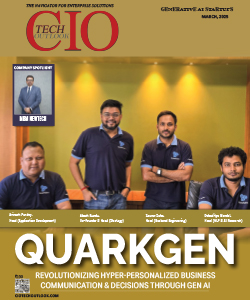Global CEOs and Tech Titans Join Forces to Tackle AI Skills Shortage
CIOTechOutlook Team
Tuesday, 06 May, 2025
UAE, France Unite to Build 1GW AI Data Center in Tech Breakthrough
CIOTechOutlook Team
Tuesday, 06 May, 2025
UAE, France Unite to Build 1GW AI Data Center in Tech Breakthrough
CIOTechOutlook Team
Tuesday, 06 May, 2025
UAE, France Unite to Build 1GW AI Data Center in Tech Breakthrough
CIOTechOutlook Team
Tuesday, 06 May, 2025
Fueling the EV Future - Insights from karan Dhillon, Co-founder, Perpetuity Capital on Financing India's Green Mobility
CIOTechOutlook Team
Tuesday, 06 May, 2025
India Launches First-Ever Real-Time Tumour Tracking System
CIOTechOutlook Team
Tuesday, 06 May, 2025
NASRDA, UNICCON Partner to Advance Nigeria's Space Tech and Innovation
CIOTech Outlook Team
Tuesday, 06 May, 2025
Tech giants, govt to set up Indian Institute of Creative Technology
CIOTech Outlook Team
Monday, 05 May, 2025












